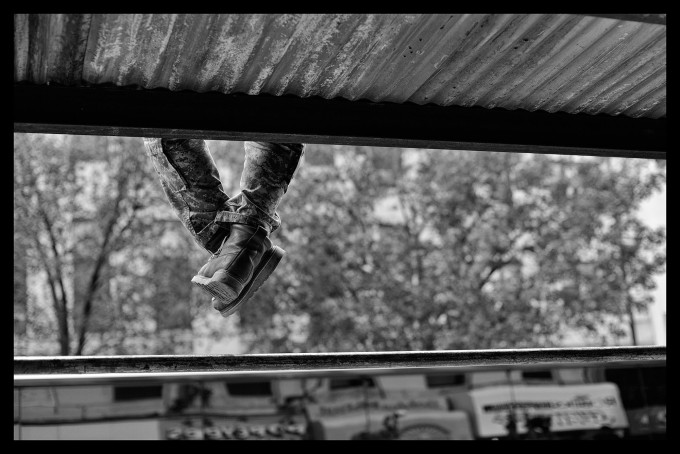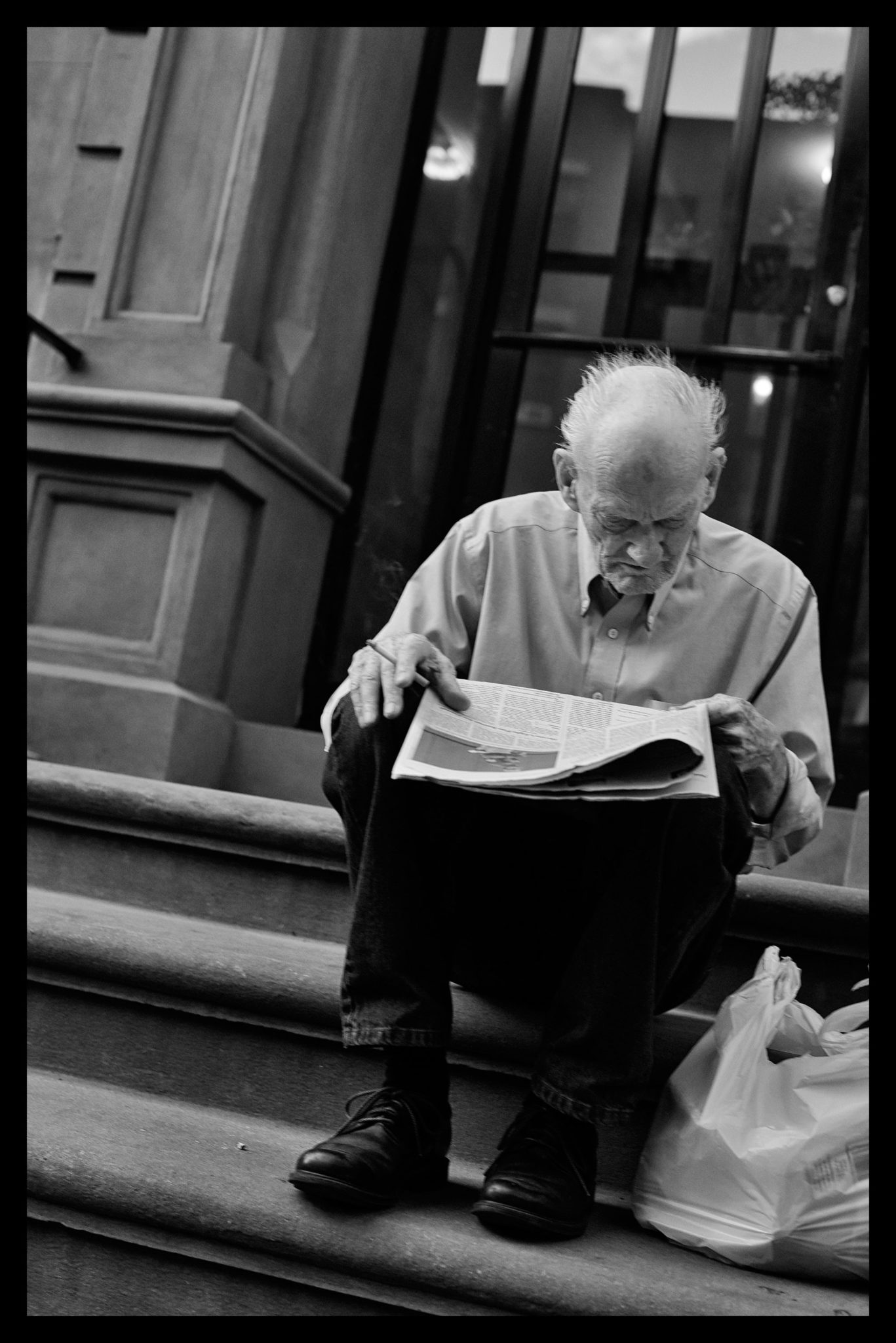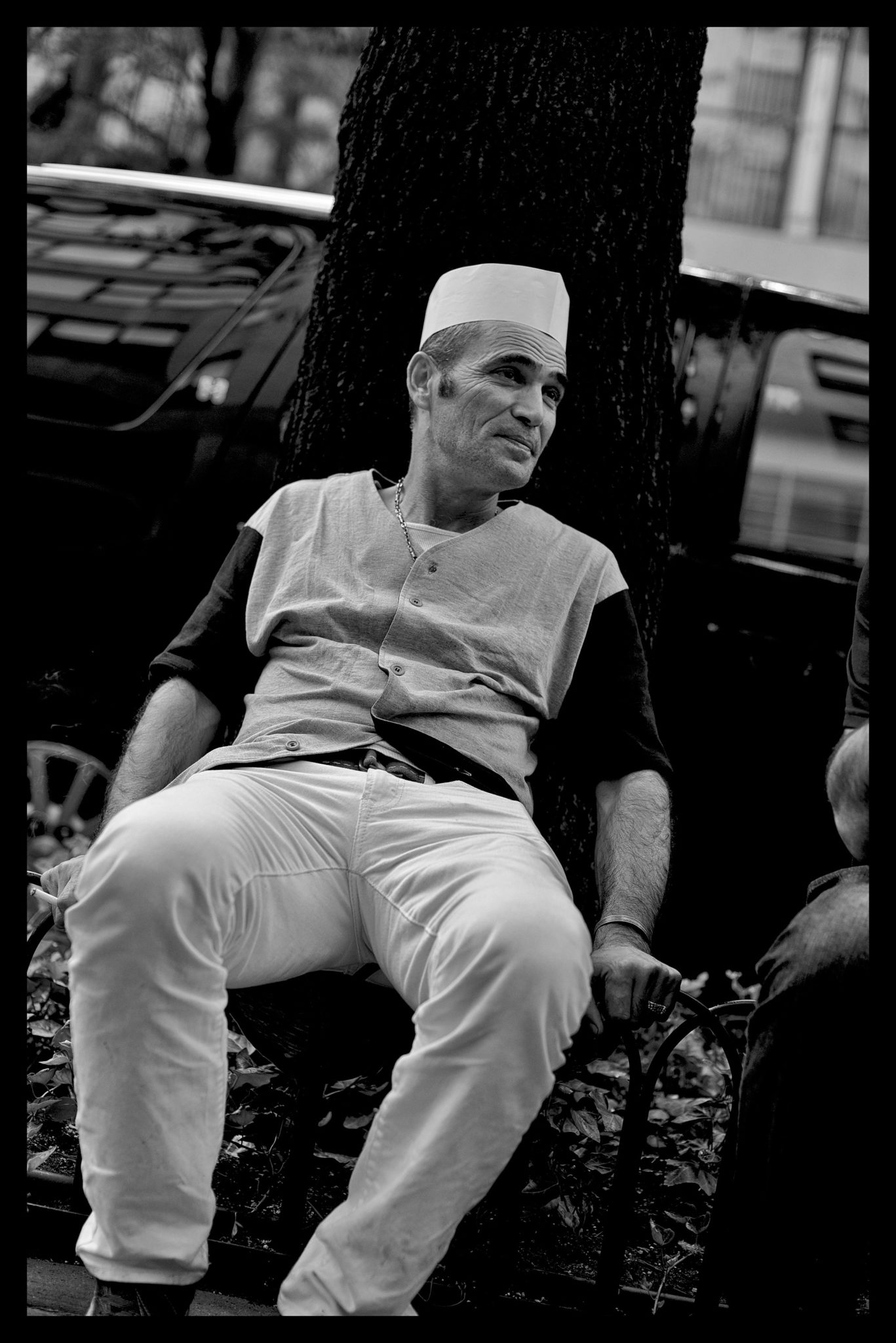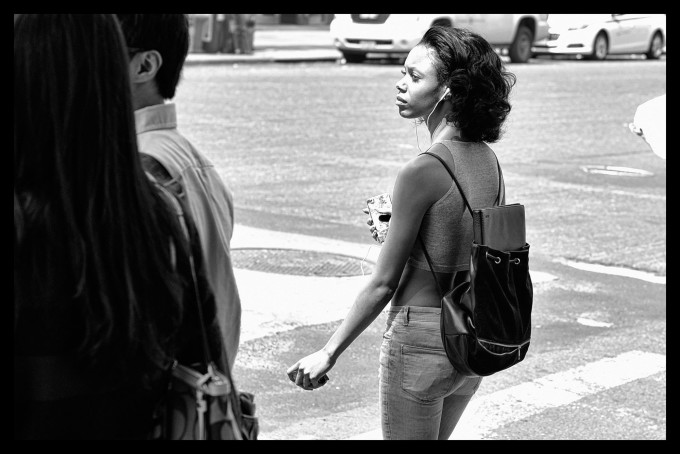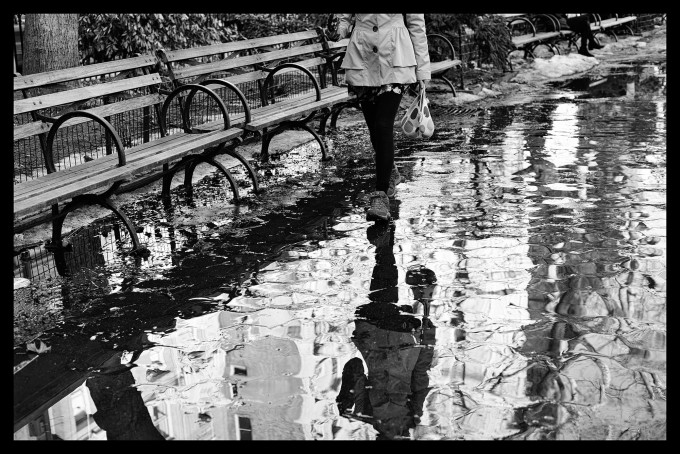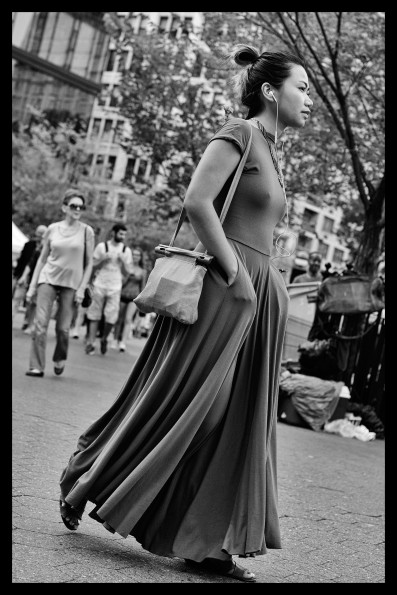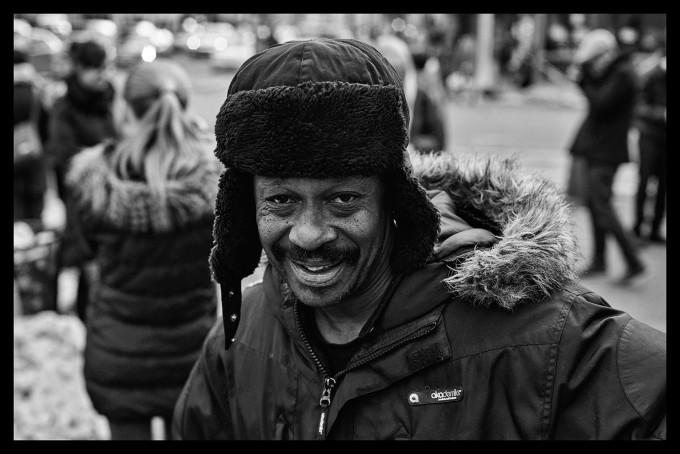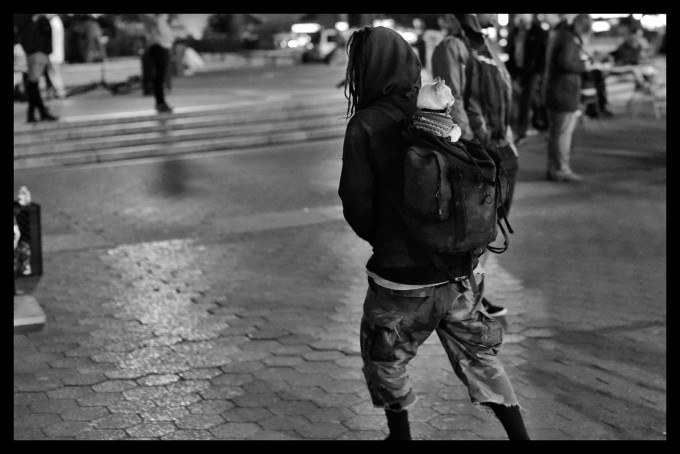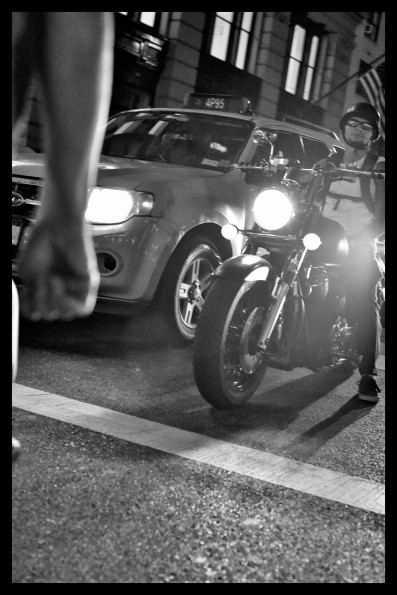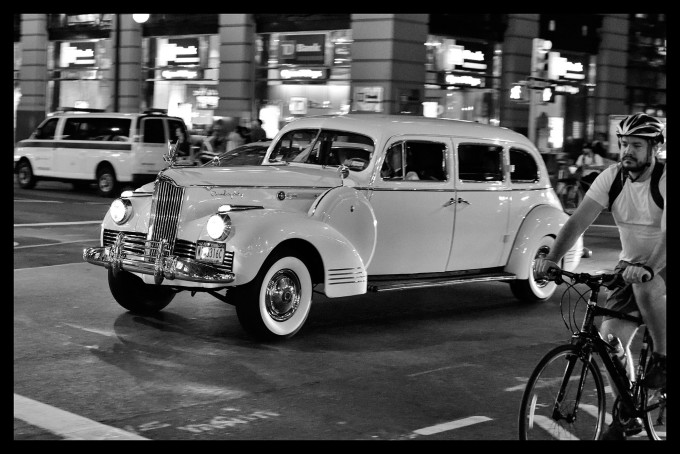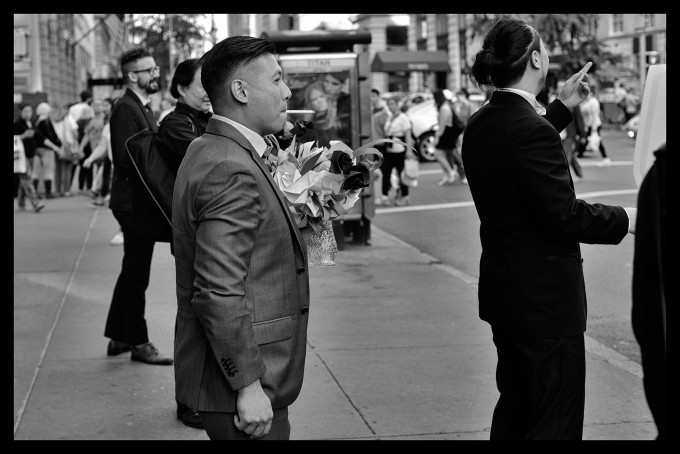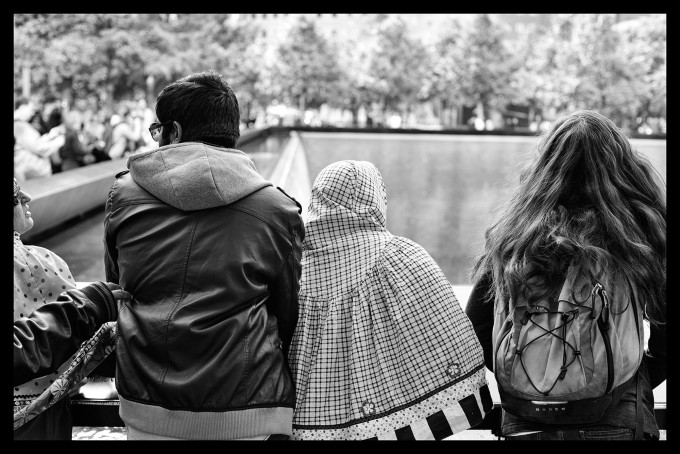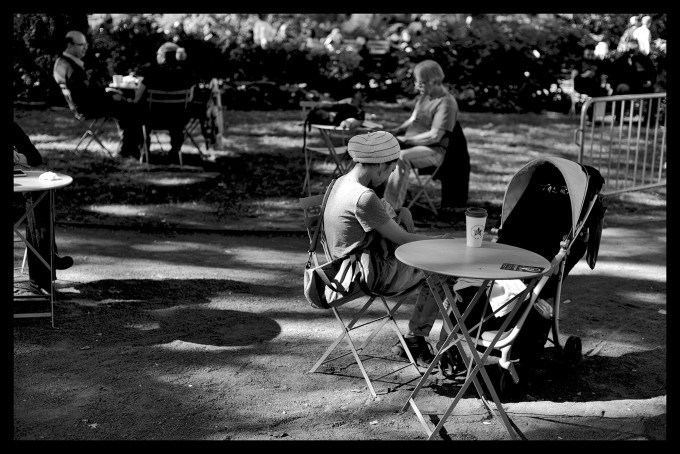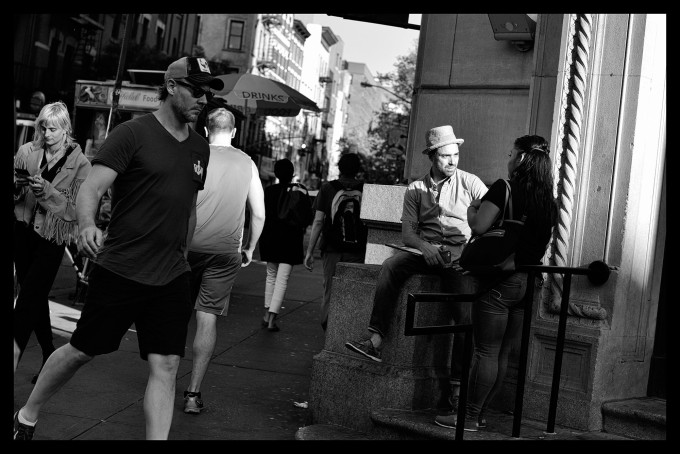All images by Charlie Naebeck. Used with permission.
Photographer Charlie Naebeck is an artist residing in New York City. He knew from the start that the business would be all about networking, making deals and creating work that excites people. His business, Spiffy Photos, does headshots and portraits–but he’s also done commercial and editorial work. On the side though, Charlie is a street photographer.
Besides shooting though, Charlie is also a photography course instructor here in NYC. Most of all though, he’s a realist instead of being an idealist when it comes to the industry.
Phoblographer: Talk to us about how you got into photography.
Charlie: I got into photography because of my Grandma. She was a photographer also, and was always making images throughout my life. I got super interested in making my own images when I was ten. She gave me my first camera for my birthday that year (a Polaroid 600), and I started making my first images simply to see what the world looks like photographed as Garry Winogrand once said. I was really experimental and mowed a heck of a lot of lawns early on to earn my film money.
Phoblographer: What made you want to get into commercial portraiture?
Charlie: First, I have always been a people person. Some photographers prefer to start out with landscapes, or still lives initially as they are more introverted (which is perfectly fine!), but for me, I have always been a people person. It is simply a different dynamic in my eyes to work with people. I really did not get into the commercial side of things until I started assisting doing weddings long ago as a way to pay for personal projects and gear upgrades. I quickly realized that if you can form a strong work ethic and hustle that you can make a living. Later on, one of my friends asked me to shoot my first fashion show in Detroit, MI, and I was asked back for the next show because they liked the images. I learned the importance of networking and having strong photographic skills at that point. In the commercial world is really 90% administrative of planning leading up to the shoot and networking vs. 10% creative/having fun (at least if you are in this for business). I thrive on the hunt and the adventure from this. That, and I still first and foremost love meeting new people from around the world to tell their story through portraiture.
Phoblographer: You, as a photographer, do much more than commercial portraiture though. You’ve also done editorial work, and you’ve done street photography. So what attracts you to] photographing people in general?
Charlie: For me, it is the creative synergy with another individual that gets me going. Even if I am doing something like corporate headshots for example where it is very straight forward, the whole time I am talking to that individual and getting to know who they are and their story. Part of the attraction to that for me is the journey, the other part is when I look back at the work and see something that both the subject and I can connect with. Most often, by the time I am done with a shoot, my subject and I are joking around as if we are old friends. I am a firm believer of keeping shoots light and fun. The time simply flies by, and you get more natural images if your subject is enjoying being photographed.
“I consider myself a student of light at all times always looking for possibilities.”
Phoblographer: You’ve been doing portraits for a very long time. So what’s your process like? I’m sure it’s collaborative and a conversation is had, right? But what about concepting ideas? How do you go about that?
Charlie: No matter if the shoot is client based or a personal project, it always starts with some form of catalyst as inspiration. For me, that can come from many different places. I once saw a red movie ticket stub on the floor of the 1 train that simply said “ticket, admit one” on it, and immediately I grabbed my sketchbook out of my bag and devised an entire cinematic experience of the couple that got in a fight as they were getting onto the train after coming from the movies. I wondered what they saw? what caused the fight? I immediately had a shot list in my head for an entire editorial or short film. Other times, someone could verbally say something to me, or I could see other photographs that I might like to combine with other ideas.
“Most creatives do not realize that even in this technology age that we live in, simply shaking hands and smiling face to face to show someone that you are a live human being that is there to help them accomplish whatever goal that they have will get you the job. Simply put, people hire who they like.”
I also keep a small library of books in my home with not only photography books, but other literature and inspiration from history. Most of the time I prefer a Moleskine sketchbook so that I can immediately brain dump and hash out ideas. Once I have an idea of what I am doing the third step is to find a subject that is right for the shot. If it is a client, most of the time this all starts with a meeting to discuss direction and goes from there. If it is for a personal shoot, most of the time I already have someone in mind that might work for the shoot, and it is simply a matter of asking if they are interested in participating. I generally find ways to get things out of my head onto paper in sketches or writing to organize them though.
Phoblographer: What’s very unique about your work is that nothing really looks similar, so you’re never really recycling ideas. How do you keep the creative juices going for that?
Charlie: I look for what best communicates an idea verses what some might call a “style”. Being I also teach, I am a strong advocate of getting my students to think outside the box to communicate vs. getting trapped into trends or styles. Good composition and solid exposure skills to make images will take you very far in photography (simpler is better). Styles come and go to the point where some get left in the past if they don’t know how to adapt. I also studied psychology back in college in addition to art school and tech. One of the first things that I ask myself is what will get the message or feeling across to the viewer? Due to the influx of social media these days, most folks only have a 10 second attention span on imagery or less, so being able to break an image down into its most powerful means of communication is very important to me.
Phoblographer: When we met, we talked about how much this industry is about who you know more than what you know. Talk to us about how you learned that in photography?
Charlie: It really is about building relationships a lot of the time. Sure, there are things that you must know to go into certain shoots, but sometimes that is over ruled. I have had my ties into many different creative worlds in the past. I am a photographer, I draw, I paint, and I am a musician. No matter which creative industry that I have dealt with, most individuals think that they can simply put a website online, or a blog/twitter/tumblr..etc. and get “discovered” to the ends that people will pay them to do what they love. While it is great to have a portfolio, and to have your name out there, no one knows how to find you if you don’t tell them to look. Most people have jobs, lives, families..etc. and the realization that I learned over the years is that most simply think about themselves or their immediate families first and foremost. They do not care if you are creative, or that you have a blog. Most client based work that actually pays is there because people need a service to suit their needs and not a rock star. They tend to go towards the folks that make their lives easier also. Most creatives do not realize that even in this technology age that we live in, simply shaking hands and smiling face to face to show someone that you are a live human being that is there to help them accomplish whatever goal that they have will get you the job. Simply put, people hire who they like. I don’t think that you can get the same sense of who someone really is by viewing their online presence. You get one thing built up in your head, and then it may disappoint if you meet that individual in person to the point where they don’t live up to the hype.
I can honestly say that very rarely does a complete stranger find me through my blog or Instagram to pay me to do what I do. Most of the time, I am initiating the conversation by some means. When I started to do fashion work, sure I would get random models that would contact me asking to shoot for trade/free, but lets be honest, while that stokes your ego, it does not keep your lights on or put food on the table. People only start connecting with you and what you do when you connect with them. It is all about building relationships in the industry as it is much smaller than a lot of folks think. Sometimes this takes a long time, and sometimes you will see new photographers pop up over night to start hitting it. It will not be the same for everyone though. The secret is to be consistent and persistent though to simply hit the ground running every day to find where you fit in within the grand scheme of things. No two photographers share the exact same path. A photography mentor of mine named Ed West once pulled me aside and told me that you simply have to insert yourself into the world, and the world will accept you for who you are and want to be if you remain persistent.
Phoblographer: When you’re done with a portrait session and you move onto the editing stage, what’s typically going through your mind? Every photographer tries to find a way to make their images look very signature and unique. So what determines whether something gets the final cut or not?
Charlie: In a perfect world, one would simply shoot every image clean out of the camera. Let’s be honest again though. There are photographers that are what we call “purists” that believe images should not be edited out of the camera. Then, there are those on the other side of the fence that Photoshop everything beyond recognition. My personal take came to me after I was reading Annie Liebovitz’s book called “Pilgrimage” which is about some of her personal projects. In the book, she talks about how she wanted to photograph Ansel Adam’s Half Dome image for herself. Over the course of a few years, she returned to Half Dome several times in the attempt to get the perfect clouds to make the image. She was never able to capture the perfect clouds. It was not until she met someone very close to Ansel that knew his process that she was able to discover that he sandwiched two negatives under an enlarger to print clouds from a different negative onto his half dome shot. The sudden thought of photographic blaspheme immediately struck me! Holy s***! Ansel used Photoshop! From that day forward, I never thought twice about the purists or the manipulators again.
For me, editing starts with attempting to make the cleanest image that I can within the camera for whatever the end game is on that job. I am a fan of variety, so I make sure that I capture enough possible outtakes where I feel that I have “got the shot” in the can so to speak. Next, I immediately unload the work and back it up when I get back to the studio before I even begin to make any form of selections. After the backup process, I view the images in groupings of looks and locations. With portraits, the first thing that is important in my selection is that the expression is able to communicate the emotion that the portrait calls for (and of course that the shot is in focus, but usually I am checking that as best I can in the field). Once I have the shot vs. a shot, I simply select the images that best convey what the subject and I are trying to convey, and I will perform the necessary retouching that the shoot calls for. Some images are very lightly retouched, while others become composites depending on the day. I am a big fan of simply using the right tool for the right job. Most of the time anything that gets “cut” persay ends up on backup drives in case the client wishes to purchase additional selects. Most anything that I do not wish to see the light of day gets deleted in the camera even before the editing process. My point, take enough shots so that you have options!
Phoblographer: How do you feel your work has progressed from the past five years?
Charlie: Lets just say if I would have known then what I know now… but seriously, one goal of mine has always been to remain open minded. I consider myself a student of light at all times always looking for possibilities. Five years ago, I was making very different images than I am today. I think that the progression is naturally healthy that as creatives we have to keep an open mind to try new things in our work. There are some photographers out there (I won’t name names) that make the same image day in and day out, and they are very good at that one thing. That is fine. They have built their business to be known for that one thing and are somewhat trapped I think if they want to try something new. Personally, I have seen myself become much more versatile in the past five years. Being one of my passions is street shooting when I have time, five years ago, I would have never lifted my camera to my eye just a few feet away from a subject that is looking directly at me.
These days, I am not nearly as invasive as Garry Winogrand once was by attempting to evoke an emotion by shoving a camera in someones face, but I am much more in the mentality of the fact that it is better to ask forgiveness than to ask for permissions to the point where I will take the shot that I would have avoided several years back. I prefer to make images with a 50mm lens as a street photographer also, so I am forced to change my proximity to my subject also. Nothing against the snipers with the long lenses, but people will spot you a mile away with those as they are perceived by many as a more “professional” lens, and you can’t put yourself in the shoes of the individual that you are making the image of to feel the experience by shooting from further away like you can if you get close. I also follow the rule of thumb that was passed on to me by David Turnley when I met and studied under him. He stated that if you can dignify someone in the moment, take the shot. If you feel that it is wrong for any purposes according to your standards, don’t take the shot. This has served me well in my progression.
Phoblographer: Talk to us about your street photography; what makes you want to actually photograph the moment? Is it the people? The light? The geometry?
Charlie: For me, it is more of trusting my gut instinct or sensing a feeling that someone or something might evoke from me in my work. This past year, I put out a surprise zine online over the holidays called “In Crossing” (https://www.blurb.com/b/6713778-in-crossing) when I realized that I had amassed 8,532 images of personal street photographs from 2015. In my street work, it is sometimes more about the adventure, and less about the final image. I never set out to make a zine of work with the images that I photographed this past year, and simply photographed just for myself as if I were starting again at ten years old. The sense of freedom was quite invigorating. I usually do a lot of work where people dictate what kind of image that I make in the commercial world, so the question that I asked myself when I started collecting images at the beginning of 2015 again consistently was “what would I make/capture if I knew I could not fail?” I think that Jay Maisel sums it up perfectly with my own beliefs on street photography of how he states it is about light, color, and gesture. My approach is to first look for good light, mix a bit of serendipity that I will encounter interesting subjects, and then composition becomes what happens in the moment. A lot of the work that I did for my zine was also shot from the hip.
I am very interested in getting outside of my own mind sometimes in what I create in my personal work to go back to that state of experimentation. This meant shooting blindly which was also part of the adventure and the challenge for me.


